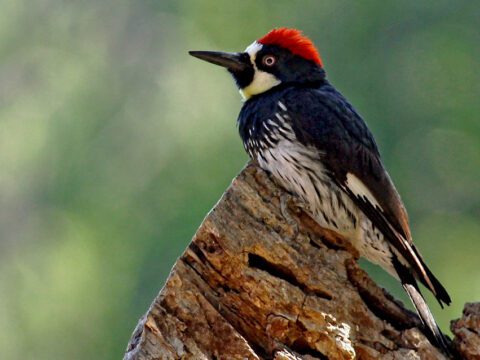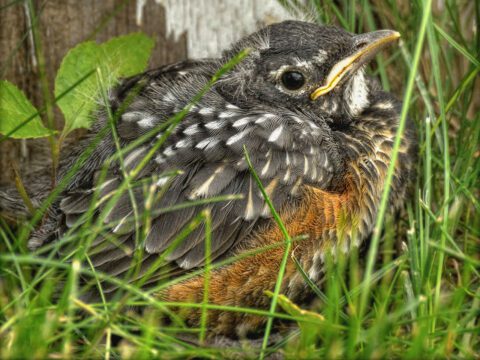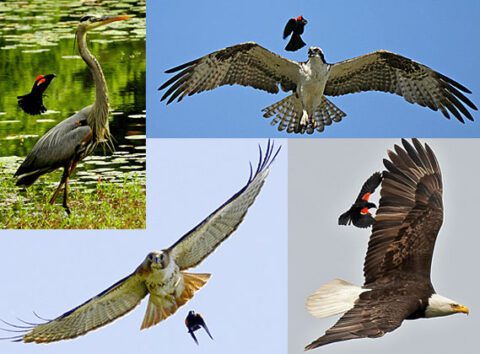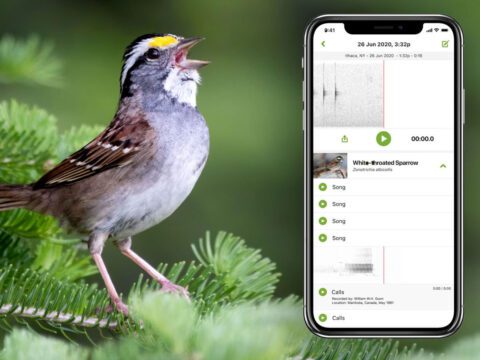Our Man in Mauritius Recording Sounds for the Macaulay Library
By Hugh Powell
October 15, 2010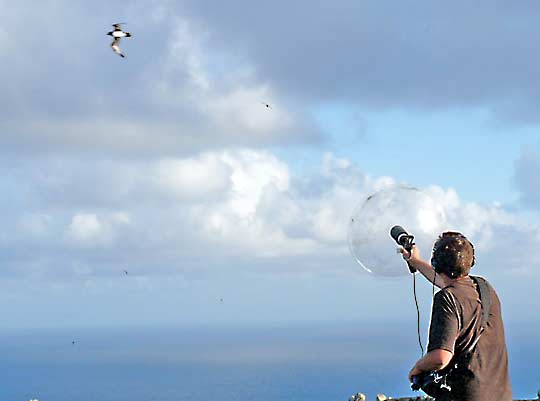
A volunteer records rare birds for the Macaulay Library
I may never travel to the Indian Ocean to see Mauritius, the famed island home of the Dodo. But thanks to a volunteer recordist named Jon Erickson, I can listen to many of the island’s remarkable endemic species, and even watch a few short videos, on our blog.
Jon spent 9 months on Mauritius in the last year, and in between making some 600 recordings of the island’s unique birdlife (including 11 species found nowhere else in the world) he sent us riveting accounts and crystal-clear recordings of birds like the Pink Pigeon, Mauritius Parakeet, Wedge-tailed Shearwater, and Mauritius Kestrel.
“Throughout our history, the contributions of volunteer recordists have been fundamental to the development of our archive,” said Greg Budney, audio curator of the Cornell Lab’s Macaulay Library. “Jon’s work is outstanding. He picked up all the endemics, and then moved on to other species. His work on the Round Island petrels are valuable data for researchers engaged in sorting out the taxonomic relationships of the Pterodroma petrels that breed on that island.”
Jon is a tireless worker who quickly befriended the staff of the Mauritian Wildlife Foundation (MWF), a group of ardent conservationists who have been instrumental in bringing many of these species, including the pigeon, parakeet, and kestrel, back from extinction.
A Status Report on Conservation
“Jon now has a body of material that forms a status report of those species after some immense conservation efforts,” Budney said. “The last comparable body of material was recorded by Jennifer F. M. Horne, in the 1970s, and that is archived here in the library. Jon’s work is another series of datapoints in time, some 40 years later.”
Jon helped MWF staff with their work, too: he banded petrels on an uninhabited island, searched for keel-scaled boas in a volcanic crater under the full moon, watched rare fruit bats fly overhead while camped out in a national park, offered water to Aldabra giant tortoises, and rescued a Mauritius Kestrel from an attack by a White-tailed Tropicbird. He even got stung by a scorpion.
His cooperation with the local conservationists gave him access to record in places usually off-limits to tourists. And with his parabolic microphone permanently at the ready, he got some unexpected recordings, too, like the sound of a Pink Pigeon slipping off the roof of a bird feeder, and the “kazoo opera” of nesting Wedge-tailed Shearwaters.
All the sounds Jon recorded are in the process of being archived into the Macaulay Library, where they will be accessible to scientists and the public for future study. You can already hear some of these sounds.
Island Life With Purpose
For Jon, exploring Mauritius one bird song at a time was a moving experience, and one that grew in importance as he stayed there. After returning to the United States he wrote to us, saying
“Island life in Mauritius is as laid-back as one would expect, but I realized after a few months that there is also a sense of urgency beneath the surface of this casual attitude. Fortunately, this urgency is felt by the Mauritian Wildlife Foundation as well. Island ecosystems are much more susceptible to extinction and this reality seems to filter its way into daily life.
“Just 40 years ago, species like the Pink Pigeon and Mauritius Kestrel were both down to single-digit numbers. But through the hard work of Carl Jones and the entire MWF staff, much of the island’s flora and fauna are recovering. I was lucky enough to see many MWF projects, and it is a great inspiration for me to leave the island knowing that just one efficient and well-run organization can have such a tremendous impact on so many species.”
“A Natural”
Jon’s experience as a carpenter helped make him useful on Mauritian Wildlife Foundation work crews, and his background as a musician helped him become, as Budney put it, “a natural at sound recording.” Before his trip, Jon visited the Cornell Lab for a rapid-fire version of Budney’s field recording workshop (Budney condensed the standard weeklong course into a single afternoon).
“Jon quickly grasped the principles of recording wildlife in stereo,” Budney said. “To do that you have to be able to imagine how the activity is taking place”—for example, when recording two chattering petrels as they chase each other above a cliff.
“You don’t just plunk down the microphones and press record,” Budney said. “You have to understand how the specific microphones pick up sounds and place them stategically to capture movement from left to right or right to left. Jon quickly became very good at that.”
Now back home in Narragansett, Rhode Island, Jon continues to correspond with Budney and to parse the air around him for bird song. Hoping to cure what he calls “fieldwork withdrawal,” he’s also hatching plans to return to recording. After such invaluable work in Mauritius, we can only hope his plans succeed.
Originally published in the Autumn 2010 issue of BirdScope.

All About Birds
is a free resource
Available for everyone,
funded by donors like you
American Kestrel by Blair Dudeck / Macaulay Library

